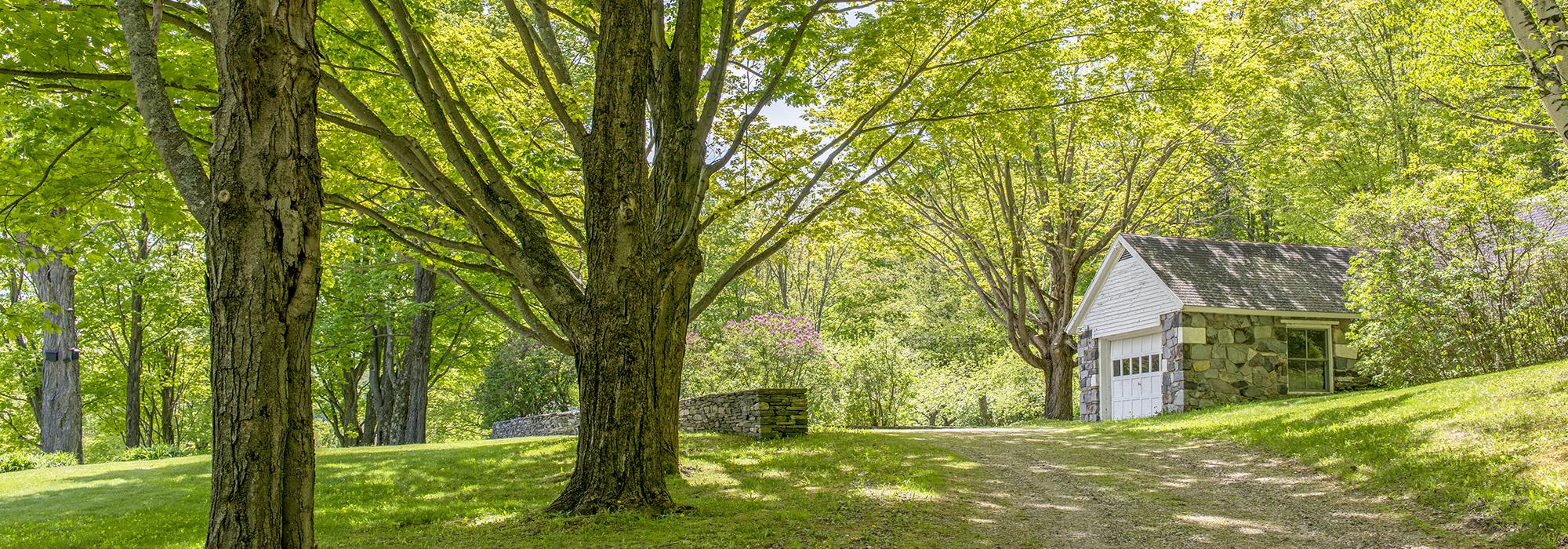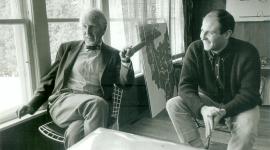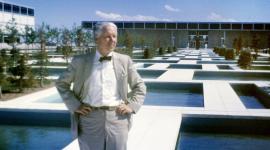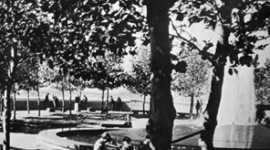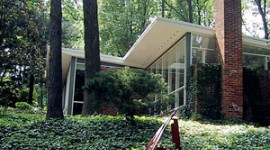Dimensions of Dan Kiley, Part 1
By Chris Dunn
Editor's note: In this first installment in a two-part series, landscape architect Chris Dunn shares insights from his personal and professional relationships with Dan Kiley, which spanned a quarter century. Dunn was Kiley’s protégé and son-in-law. Part 2 of the series can be found here.
Dan Kiley’s extraordinary career as a landscape architect spanned six decades and a majority of the twentieth century. Born in 1912, he lived an inspirational life until 2004, traveling the world, working with high-profile clients, including the most celebrated architects, and creating works of lasting beauty. I was fortunate to have known Dan on a personal and professional level for 25 of those years, beginning in 1978 when he was 66 years old.
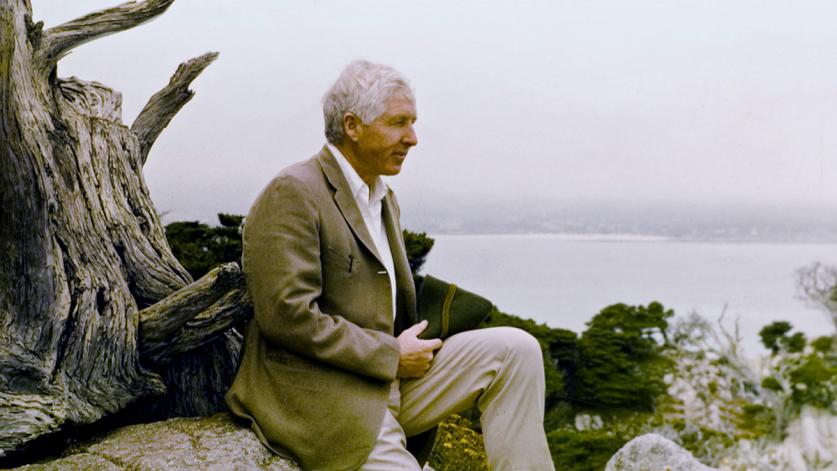
My connection to Dan was the result of luck and some good advice. I had attended the same high school as three of his eight children and began working for a local landscape contractor. Having decided that landscape architecture was my calling, I was eventually accepted into Cornell University to study the field seriously. The landscape contractor who employed me suggested that I could gain valuable experience working for Dan, whose home and office were located in our small Vermont town. During the summer of 1978, between my junior and senior year of college, I approached Dan about an internship, and he consented. At the end of the summer he offered me a full-time position, but it required that I take a leave of absence from my studies. That leave of absence began a 25-year relationship with Dan that proved to be a fascinating journey on multiple levels.
During my internship, Dan’s oldest daughter, Kathleen, moved home with her two young children in the wake of an unsuccessful marriage. Kate and I met during that time, which was the beginning of a life that we still share today. After spending five years in Dan’s office, I left in 1984 to hang my own shingle in Burlington, Vermont. Dan and I continued to be professionally connected through projects he sent my way—some too small for his buzzing office, others with clients who demanded more attention than he could afford to give. Kate and I lived just down the road from Dan and his wife, Anne, whom we would visit every Saturday evening for cocktails. These personal interactions with Dan over many years provided insights into his influences, inspirations, personality, and work.
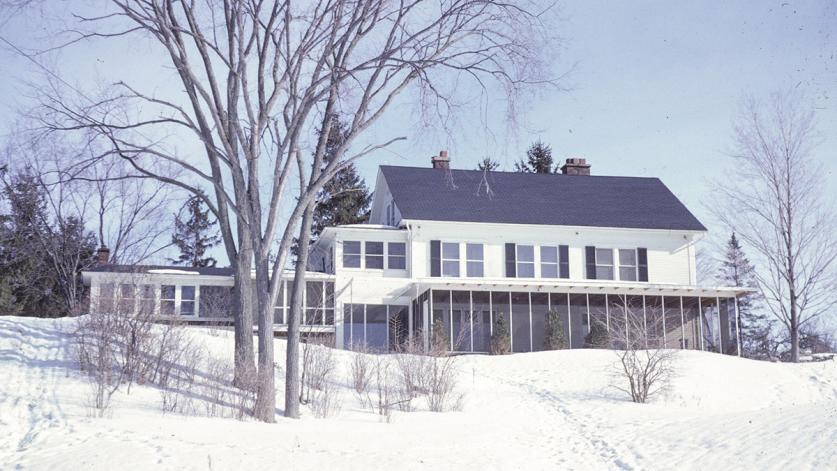
Dan’s genius was indeed shaped by multiple influences. He was raised in the Boston community of Roxbury, where he delighted in the tight-knit neighborhoods of fenced yards, back alleys, and the resulting urban fabric of varied but interconnected spaces. He also loved exploring the woods and meadows of his grandmother’s New Hampshire farm. His fond recollections of the various smells and textures in the natural environment kindled his love for plant material and made him keenly aware that landscapes are experienced through multiple senses.
Dan also spent time at the Arnold Arboretum, which was near the high school he attended in Jamaica Plain. And as is well known, he worked for Warren Manning (a former partner of Fredrick Law Olmsted, Sr.) before enrolling as a special student in Harvard’s Graduate School of Design. During weekends he and friends would travel to Franconia, New Hampshire, to ski at Sugar Hill, one of the earliest ski facilities in New England. Dan routinely stayed at a lodge run by sisters Anne and Addie Sturges. He began courting Anne, who shared his love of the outdoors, and they soon married.
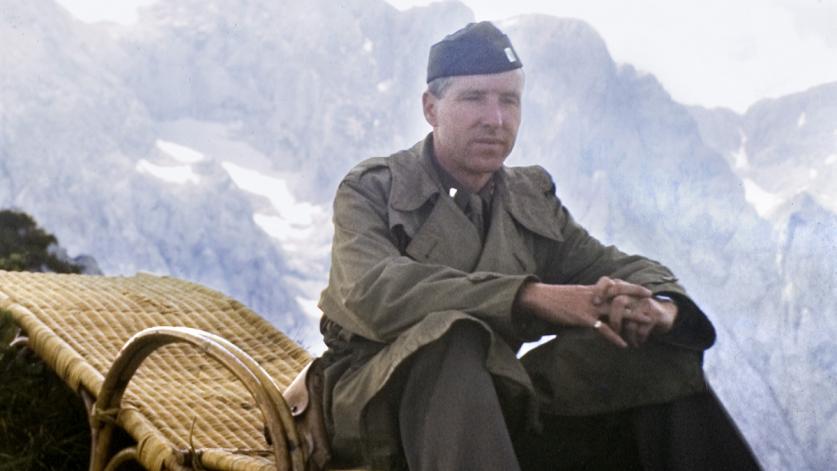
When the United States entered World War II, Dan was determined to join the Tenth Mountain Division and train for mountain warfare. He and Anne drove to Colorado only to find that the division was fully staffed. They then traveled to Fort Lawton, in Seattle, where Dan enlisted. During his basic training he scored high on several tests and was commissioned as a lieutenant in the newly formed Office of Strategic Services (OSS), a military intelligence agency that was the precursor to the Central Intelligence Agency. When the war ended, Dan was assigned to design the courtroom for the Nuremberg Trials. Serving in the OSS had a profound and perhaps underappreciated influence on his career. During this period, he met many of his future architect-clients who were also attached to the agency. He also formed life-long friendships, was exposed to European design firsthand, and gained great confidence in his own ability as a designer.
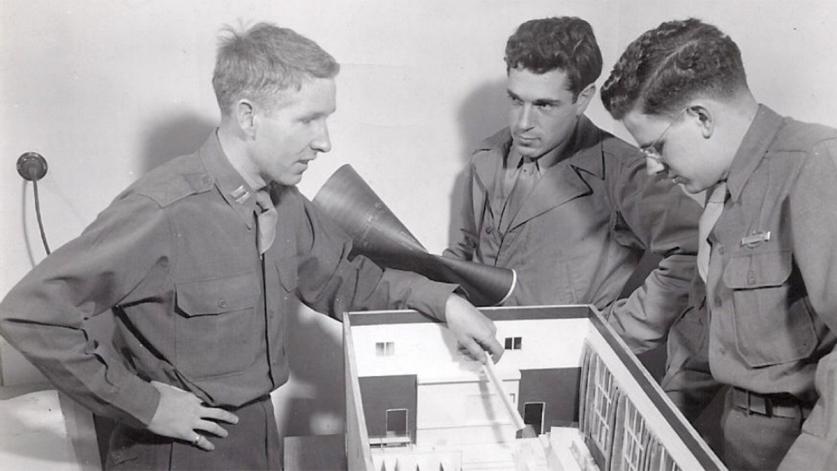
Although Dan’s design approach and philosophy were grounded in all of these experiences, the fundamental inspiration for his work was a love of nature. He liked to use a certain phrase, which, in fact, he coined: “Man Is Nature.” I must admit that I and Dan’s other employees weren’t really sure what that phrase meant. But after many years of reflection, I’m now convinced it was a response to the environmental movement of the 1960s and 70s, which often demonized man-made objects in favor of the unadulterated natural condition. Dan felt that what human beings create could also be classified as natural compositions. Understanding “Man is Nature” means understanding that we, too, are part of the natural system. Indeed, Dan was generally very critical of designs that were unrelated to natural processes, and part of his genius was in understanding how human-scaled proportions and patterns interact with natural proportions and patterns, as well as the natural systems that are required to nurture and sustain designs.
These concepts can be traced more directly to Dan’s love of Vermont and the way he saw and interpreted the regional landscape. Vermont’s agricultural heritage, reflected in the geometric forms of the cultivated fields, the rows of corn, and the browse lines of the trees framing the fields, all juxtaposed with the rolling topography, was a constant source of inspiration for him. He saw the land as a painter would, but he also understood the natural systems that created the canvas: The seasonal patterns, the wind, sun, and moisture that nurtured the landscape, the soil conditions and topography that funneled and held water or transported it quickly away, all determining what would grow where. He was fascinated, for example, with how closely together trees would grow in the forest, creating a never-ending scrim and defining open and closed spaces within the natural setting. In this way, nature could indeed give insights to the use of space and proportion, which was so important to Dan’s phenomenal success.
Many designers who try to mimic Dan’s work fail to recognize the foundation of his design philosophy. What we often see in his designs are the contemporary interpretations of geometric patterns found in the work of André le Nôtre, for example—and those interpretations are indeed there. But what we miss are the critical ecological underpinnings of the designs, as well as their natural contexts and the innate sense of proportion from which they’re derived.

There were, of course, other reasons for Dan’s great success. Although it isn’t often acknowledged, he was a skilled pitchman with an uncanny ability to sell a project. Through words and gestures, he painted pictures for his clients that were every bit as vivid as renderings or plans. He also surrounded himself with skilled employees who were willing to study a seemingly limitless number of options before arriving at the ideal solution. What’s more, that ideal solution might be discarded the very next day, when Dan had a new idea and the process would begin anew. This meant that his clients would also have to be patient, having been thoroughly convinced of the merits of one design only to be told that another was being developed.
Looking back on my time with the Office of Dan Kiley, several interesting projects come to mind. I was fortunate, for example, to work on the John F. Kennedy Library early in my internship. Located on a former landfill in the Dorchester section of Boston Harbor, the site provides phenomenal views of the city, the harbor, and the adjacent islands. Designed by I.M. Pei, the building reflects Kennedy’s love of adventure and the sea. Here Dan was tasked with building upon the themes of courage, love of life, the sea, and Boston. His design used a simple palette of plants arranged in large masses and typically found along the seashore due to their salt and wind tolerance, high PH soil, and ability to thrive in full sunlight. Compounding the need for hardy plants was the concern of methane leaking from the capped landfill. After much research, the plants selected included a limited mix of native sea grass, rugosa rose, pines, oaks, and locusts. The large parking lot was screened from the entry drive with an understory of rugosa rose (which flower all summer long and are very low maintenance) and a canopy of honey locusts. The composition creates a simple yet powerful progression leading toward the building and screens all of the parked cars on the other side of this contextual allée.
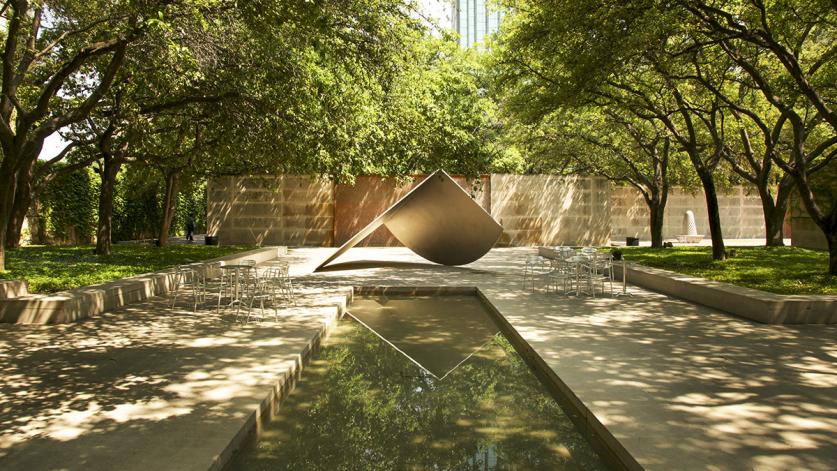
I was also fortunate to serve as a project manager on the Dallas Museum of Art, working alongside Dan and the architectural firm of Edward Larrabee Barnes. The museum is organized around a majestic barrel-vaulted central gallery. Exterior courtyards were distributed throughout the museum to relate to the specific art galleries. The largest courtyards are the sculpture and entry gardens, followed by the dining, impressionist, and tribal courtyards. Each of the courtyards and the surrounding streetscape were designed using a different palette of landscape forms and materials to reflect the adjacent use. All of the materials were native to Texas and sourced from local nurseries. Dan’s knowledge of plant materials was always impressive, and here he was able to use native yaupon holly in non-traditional and sculptural forms.
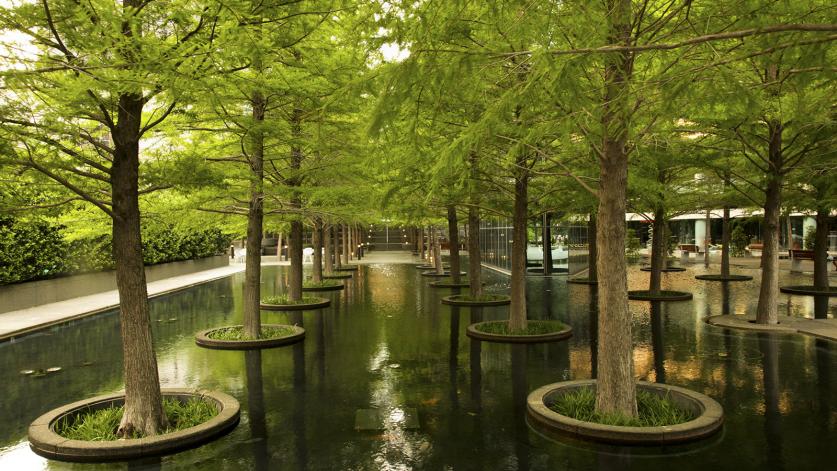
Dan was only part Irish, but if you talked with him you would assume that he was born and raised in Ireland, not because of his accent but because of his mannerisms and his great pride in being Irish. His fair skin meant that he was very susceptible to sunburn and was uncomfortable spending extended periods in hot environments. As a result, many of his landscape designs were inspired by the forest and were intended to provide a cooling and shaded environment. This is reflected in his work for Fountain Place in Dallas, undertaken during the same period as the work for the Dallas Museum of Art. The two buildings originally planned for Fountain Place were to be designed by architects Harry Weese and I.M. Pei. Dan’s pitch to the clients and the architects for creating this oasis in the center of Dallas included biblical passages and made reference to the Mughal aspiration of making Heaven on Earth, with flowing, cascading water, hundreds of bubbling fountains, and bald cypress trees that were typically found in southern swamps. The result was an iconic landscape that has inspired projects worldwide. It’s also another example of Dan’s proclivity for creating a modern interpretation of a natural environment and using native trees that wouldn’t traditionally be considered for such a project.
Dan was also passionate about designing private residences. He liked the opportunity to connect with the client and to push the envelope of residential landscape design with spaces built precisely as he envisioned them. He once shared with me that he felt that the acts of designing a garden and a city were actually very similar; only the proportions were different. And indeed, his interest in massing, creating spaces, circulation, and connectivity is reflected in all of his designs no matter how large or small.
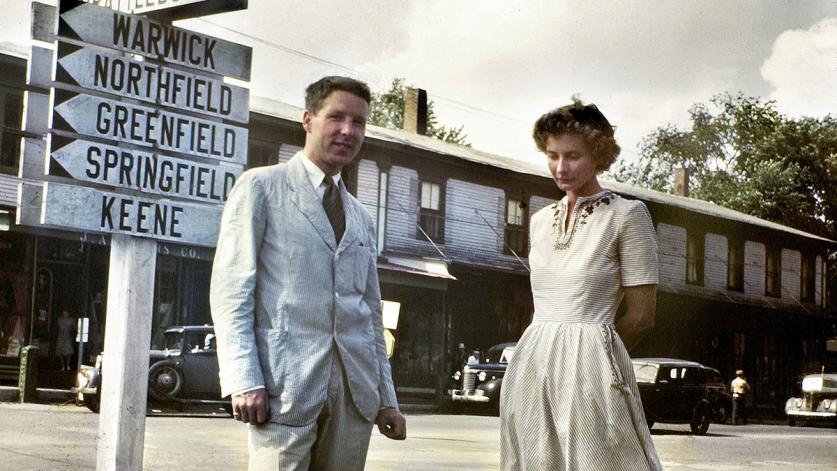
Any recollection of Dan’s career would be incomplete without acknowledging his wife, Anne Sturges Kiley, and her deep influence on him. Anne grew up in rural Connecticut and had an early passion for nature that only grew as she aged. Her love of the classics and religion both informed and inspired Dan’s theoretical thinking. Together they skied, hiked, and sailed, passing on their love of the outdoors to their eight children. They also worked their 300-acre Vermont farm together for many years. Anne hand-built a series of small huts in the woods around the farm, to which she would retreat to read and write when time permitted. The children, too, were raised close to nature, growing up on the shores of Lake Champlain and then on the farm east of town. Their days were filled with creative endeavors, such as writing, painting, and photography, making movies, and, of course, exploring the beloved Vermont landscape.
I feel lucky to have been part of this family for the past 40 years. I also feel a sense of peace about what we can bring to life and how to best share this with others as we try to leave a positive mark on the world. Now a year shy in age of Dan’s when I first met him, I realize how much he has influenced my work. I think all of us who have worked for Dan often find ourselves asking how he might do this or that on a specific project. I remind myself that he would tell us to look first at the basis of the challenge, understand all the existing conditions, and then base the design on those opportunities. While he described an ideal design as one characterized by “appropriateness, simplicity, and elegance,” beauty was always the result.



